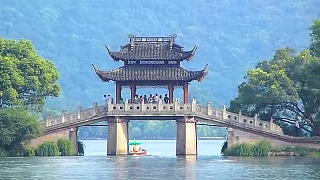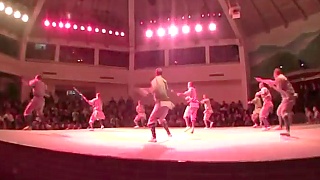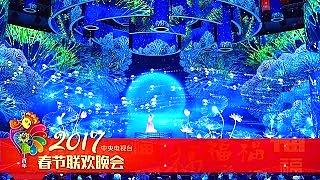
|
With Seiu Travel ...
With Wei's Travel ...
Huishan Ancient Town Travel Guide
Overview
Huishan Ancient Town, located in Wuxi, Jiangsu Province, is a well-preserved historical town known for its rich cultural heritage, ancient temples, traditional gardens, and ancestral halls. It provides visitors with a glimpse into China’s past with its classical architecture and serene atmosphere.
How to Get There
By Train: Take a high-speed train to Wuxi Railway Station or Wuxi East Railway Station, then take a taxi or public transport to the ancient town.
By Bus: Local buses such as 45, 88, and 89 stop near the entrance of Huishan Ancient Town.
By Car: Easily accessible via major highways leading to Wuxi, with parking available near the entrance.
Main Attractions
Huishan Temple: A historic Buddhist temple featuring beautiful statues and peaceful gardens.
Ancestral Halls: Over a hundred ancestral halls belonging to various Chinese families, showcasing traditional architecture and family heritage.
Jichang Garden: A classical Chinese garden known for its tranquil atmosphere, ponds, and traditional pavilions.
Huishan Spring: A famous water source considered one of the best in southern China.
Best Time to Visit
The best time to visit Huishan Ancient Town is during spring (March-May) and autumn (September-November) when the weather is pleasant, and the scenery is at its most beautiful.
Local Cuisine
Wuxi-style Spare Ribs: A sweet and savory pork rib dish famous in the region.
Huishan Clay Pot Noodles: A delicious noodle dish cooked in a clay pot with rich broth and toppings.
Steamed Dumplings: Juicy dumplings filled with pork and soup, a local specialty.
Tips for Visitors
Wear comfortable walking shoes, as there are many cobblestone paths.
Early morning visits offer a quieter and more picturesque experience.
Local shops sell handmade crafts and souvenirs unique to the region.
*****
Welcome to the Kingdom of Wu: A Visitor Guide and History
Introduction to the Kingdom of Wu
The Kingdom of Wu, a historical region in eastern China, is a land of profound cultural heritage, natural beauty, and historical significance. Centered around the modern city of Wuxi and extending to areas like Suzhou and Hangzhou, the Kingdom of Wu was one of the most influential states during the Spring and Autumn (770–476 BCE) and Warring States (475–221 BCE) periods. Today, the region is celebrated for its classical gardens, ancient waterways, and contributions to Chinese art, literature, and philosophy.
History of the Kingdom of Wu
The Kingdom of Wu emerged as a powerful state during the Zhou Dynasty, with its capital initially located in modern-day Suzhou. It played a pivotal role in Chinese history, particularly during the Spring and Autumn period, when it rivaled the states of Yue and Chu. The kingdom is famously associated with the legendary King Helü, who ruled during the 6th century BCE and is credited with constructing the Grand Canal and strengthening Wu's military.
The Kingdom of Wu is also central to the story of Sun Tzu, the ancient military strategist and author of The Art of War. Sun Tzu served as a general under King Helü, and his strategies helped Wu achieve significant victories. The region's history is deeply intertwined with the development of Chinese civilization, particularly in areas like agriculture, silk production, and water management.
Cultural Highlights of the Kingdom of Wu
1. Classical Gardens
The Kingdom of Wu is renowned for its classical Chinese gardens, which are masterpieces of landscape design. These gardens, such as the Humble Administrator's Garden in Suzhou, feature intricate layouts, serene ponds, and elegant pavilions. They reflect the Confucian ideals of harmony between humans and nature.
2. Silk Production
The region has been a center of silk production for thousands of years. The ancient city of Wuxi, in particular, was a major hub for silk weaving and trade. Visitors can explore the history of silk at local museums and workshops.
3. Wu Opera and Music
The Kingdom of Wu is the birthplace of Wu Opera, a traditional form of Chinese opera known for its melodic tunes and poetic lyrics. The region is also famous for its traditional music, particularly the pipa (a Chinese lute) and guqin (a seven-stringed zither).
Key Cities and Attractions
1. Wuxi
Wuxi, often called the "Pearl of Lake Tai," is a city steeped in history and natural beauty. Key attractions include Lake Tai, the Lingshan Grand Buddha, and Xihui Park. Wuxi's Grand Canal section is a testament to the region's historical importance as a transportation hub.
2. Suzhou
Suzhou, the ancient capital of the Kingdom of Wu, is famous for its classical gardens, canals, and silk industry. The Humble Administrator's Garden, Tiger Hill, and the Suzhou Museum are must-visit sites.
3. Hangzhou
Hangzhou, located to the south of the Kingdom of Wu, is celebrated for its West Lake, a UNESCO World Heritage Site. The city is also known for its tea culture, particularly Longjing (Dragon Well) tea.
Practical Travel Tips
Best Time to Visit: Spring (March to May) and autumn (September to November) offer mild weather and vibrant scenery.
Getting There: The region is well-connected by high-speed trains. Major cities like Wuxi, Suzhou, and Hangzhou have their own train stations and airports.
Accommodation: Options range from luxury hotels to budget-friendly hostels. Staying near key attractions like Lake Tai or West Lake is recommended.
Local Transportation: Public transportation is efficient, with buses, metros, and taxis readily available. Cycling is also a popular way to explore the cities.
|
 Deconstructing propaganda
Deconstructing propaganda































